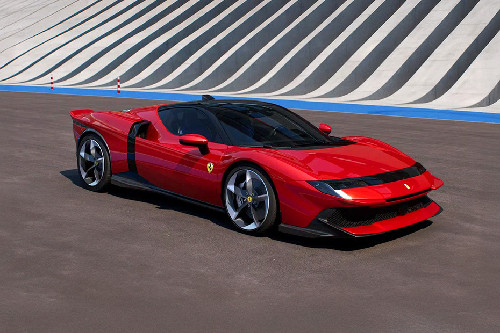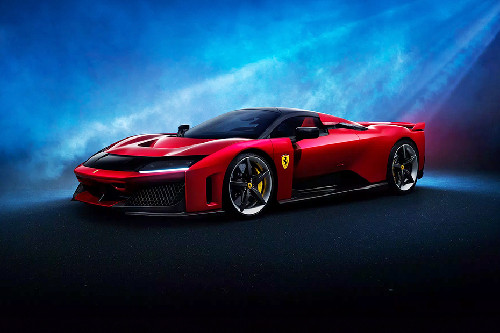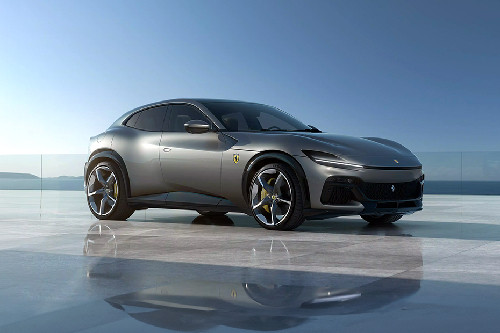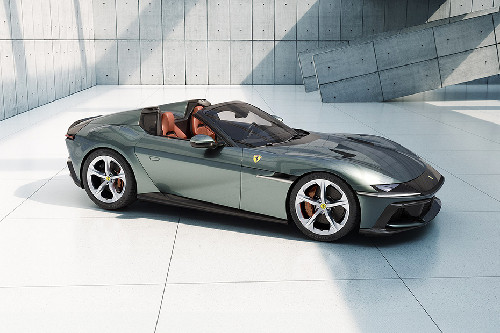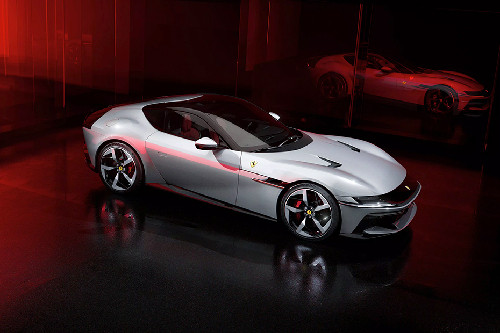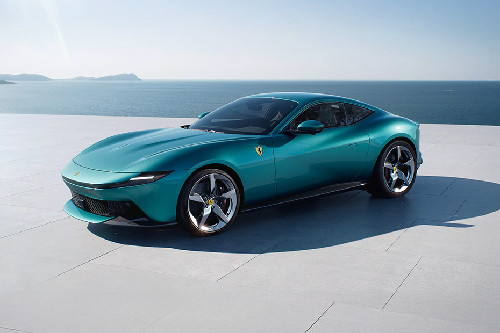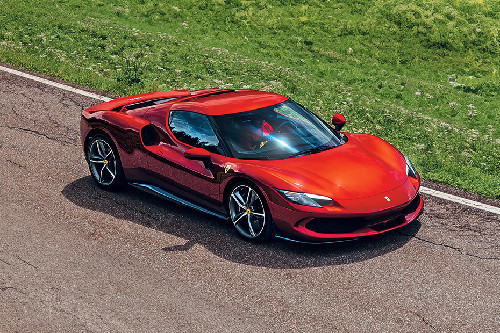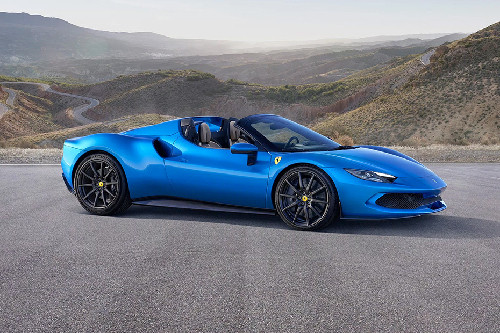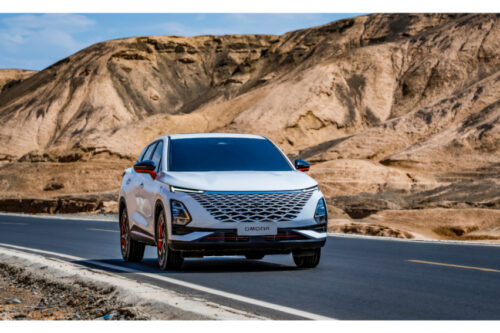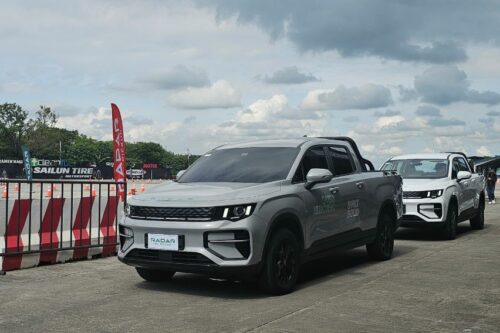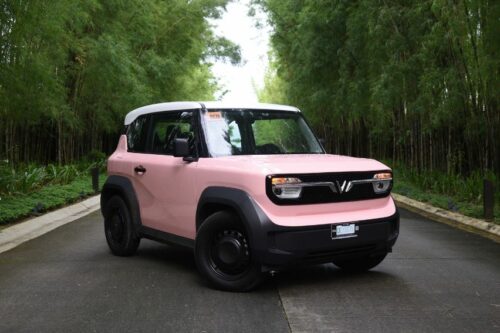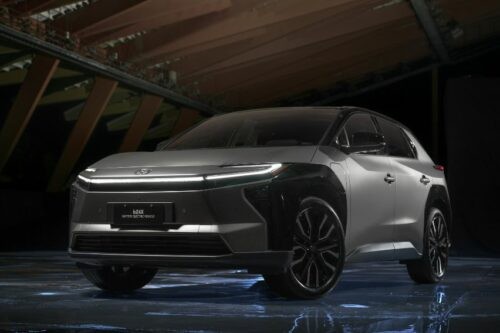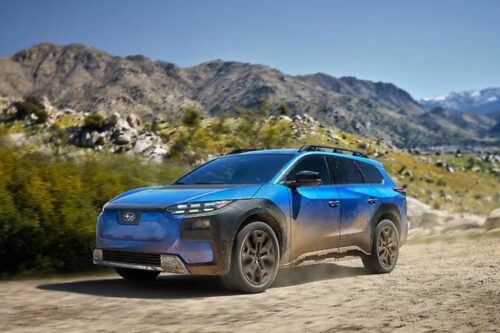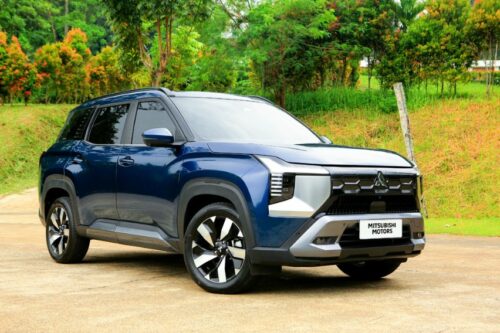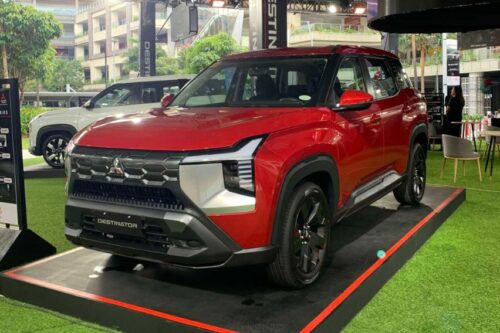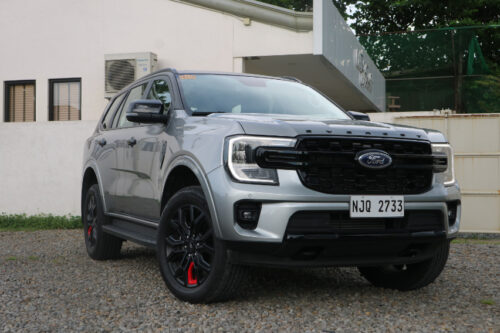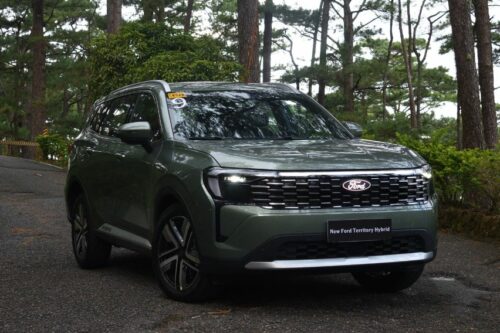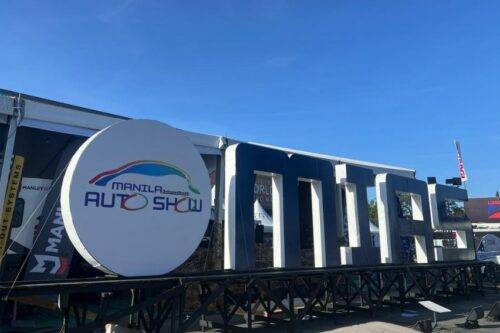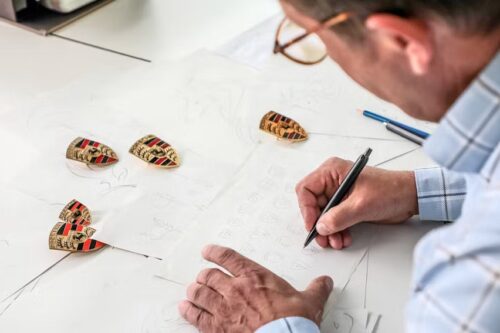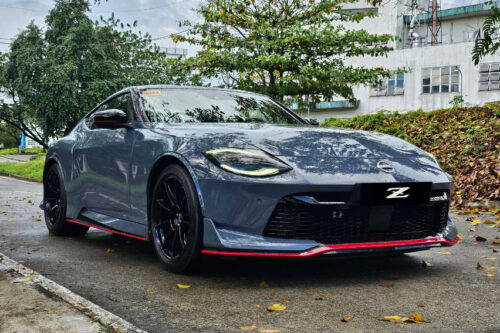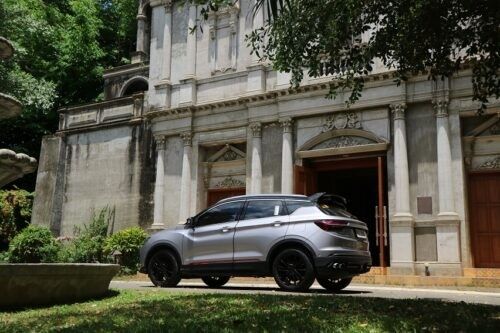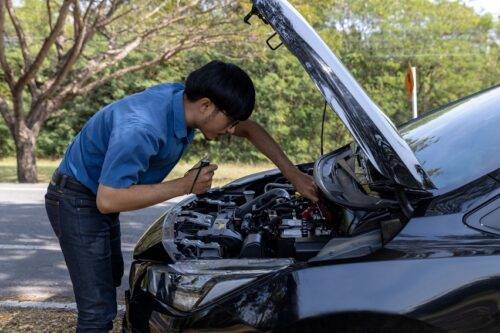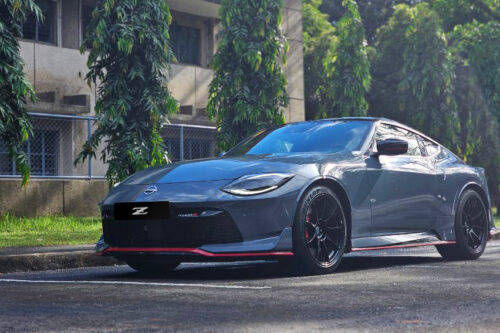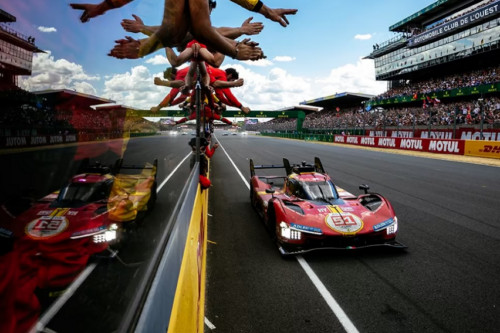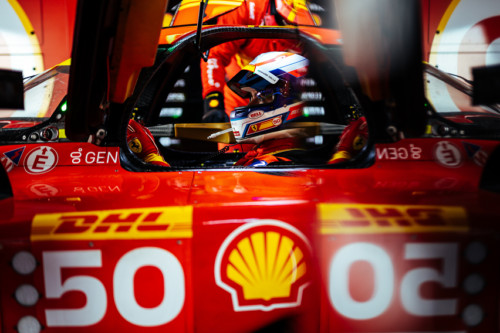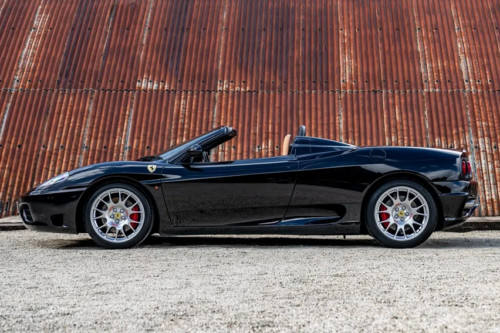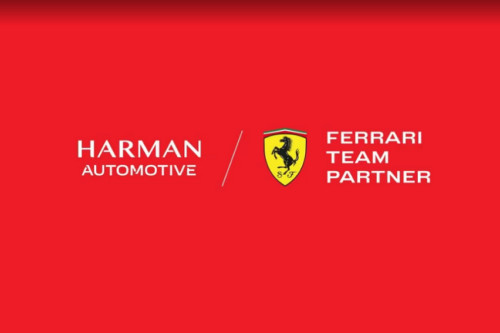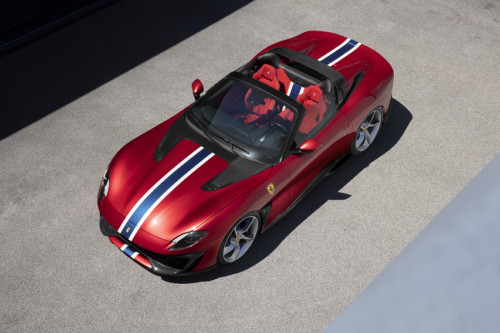Ferrari reveals newest addition to ‘Icona’ series
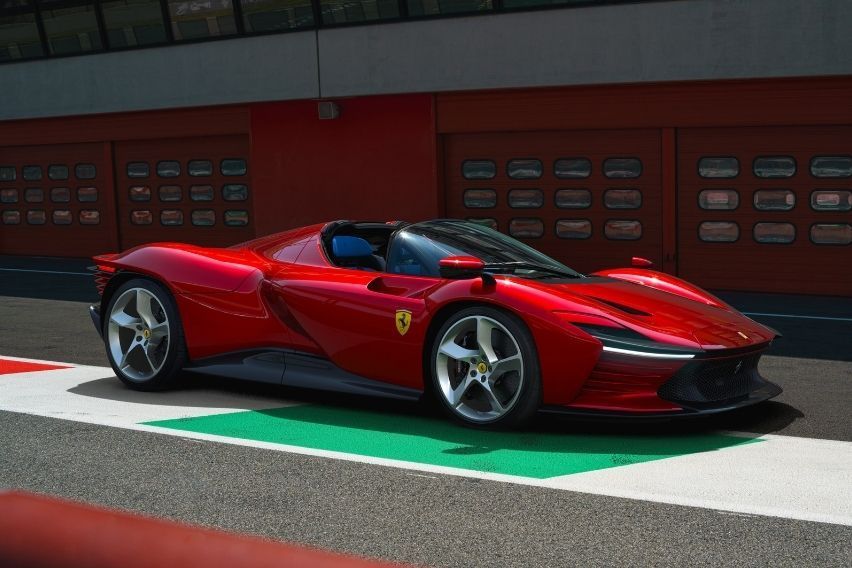
MANILA: Ferrari officially unveiled the Daytona SP3 during the 2021 Ferrari Finali Mondiali at the Mugello Circuit last Saturday, November 20. The Ferrari Daytona SP3 is a limited-edition model that joins the Icona series, which was introduced in 2018 with the Ferrari Monza SP1 and SP2.
KEY TAKEAWAYS
What is the inspiration behind the Ferrari Daytona SP3's concept?
The Ferrari Daytona SP3 takes its inspiration from iconic 1960s sports prototypes such as 330 P4, 350 Can-Am, and 512 S.What powers the Ferrari Daytona SP3?
The Ferrari Daytona SP3 is powered by a naturally aspirated V12 engine that generates 840cv and 697Nm of torque.In 1967, Ferrari accomplished one of the most spectacular performances in its history when it took the top three places at the 24 Hours of Daytona in that year’s International World Sports Car Championship. The three Ferrari cars — a 330 P3/4, 330 P4, and 412 P — that crossed the finish line in that legendary side-by-side finish on Ford’s home turf signified the pinnacle of development for the Ferrari 330 P3, a model that chief engineer Mauro Forghieri had significantly upgraded in the three racing car fundamentals: engine, chassis, and aerodynamics. The 330 P3/4 masterfully embodied the spirit of the sports prototypes of the 1960s, a decade generally regarded as the golden age of closed wheel racing and a constant source of inspiration for generations of engineers and designers.
The new Icona’s name is derived from this iconic 1-2-3 finish and pays respect to the Ferrari sports prototypes that helped the brand achieve its renowned standing in motorsport.
The design of the Daytona SP3 is a seamless mix of contrasts, with sublimely artistic, sensual surfaces intersecting with the kind of sharper lines that highlighted the rising importance of aerodynamics in racers like the 330 P4, 350 Can-Am, and 512 S. The bold choice of a “Targa” body with a removable hard top also drew inspiration from the world of sports prototypes. As a result, the Daytona SP3 provides not only thrilling driving pleasure, but also practical performance.
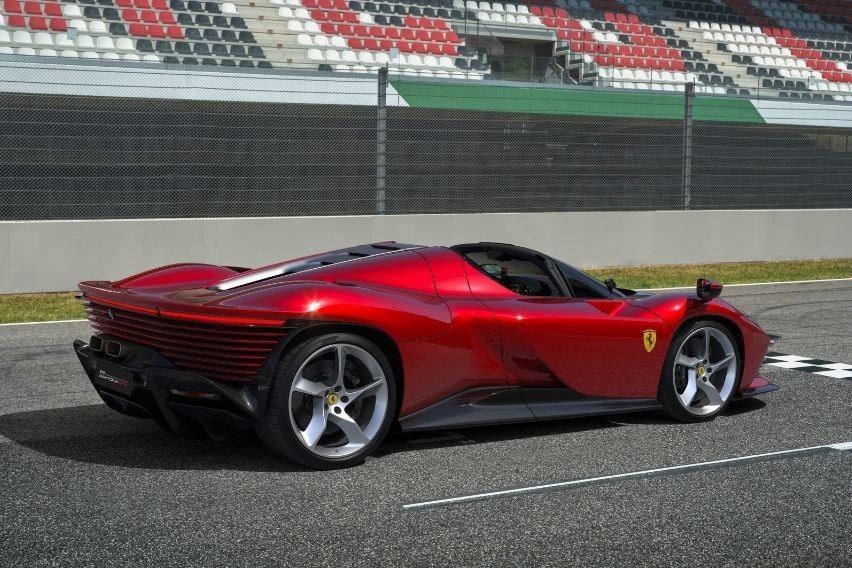
From a technological standpoint, the Daytona SP3 is inspired by the advanced engineering solutions used in racing in the 1960s. Maximum performance was attained by focusing on the aforementioned three fundamental areas.
The Daytona SP3 is powered by a naturally aspirated, mid-rear-mounted V12 engine that generates 840cv and 697Nm of torque. It is the most powerful engine ever manufactured by Ferrari and undoubtedly the most iconic of all Maranello’s engines.
The chassis is entirely made of composite materials using Formula 1 technology that has not been seen in a road car since LaFerrari, Maranello’s last supercar. The seat is built into the chassis to save weight and give the driver a driving position similar to that of a race car.
Just like in the cars that inspired the Daytona SP3, aerodynamics research and design concentrated on obtaining maximum efficiency solely through passive aero solutions. The Daytona SP3 is the most aerodynamically efficient Ferrari car ever created without the use of active aero systems, thanks to features like chimneys that drain low-pressure air from the underbody. The car can accelerate from a standstill to 100 kph in just 2.85 seconds and from a standstill to 200 kph in just 7.4 seconds.
Although inspired by the visual language of 1960s racing cars, the Daytona SP3 is dressed in very indisputably original, modern forms. Its sculptural strength embraces and translates the sensual volumes of sports prototypes to a wholly modern effect. This ambitious design required Ferrari Chief Design Officer Flavio Manzoni and his Styling Center team to implement a precisely planned strategy.
The Daytona SP3’s cabin appears to be a dome built into a sensual sculpture with sinuous wings protruding boldly on either side. Monolithic volumes, which are forceful expression of the long-appreciated skills of Italian coachbuilding, add to the car’s overall balance. The smoothness of its masses blends seamlessly with harsher surfaces to create an aesthetic harmony that has long been a hallmark of Maranello’s design history.
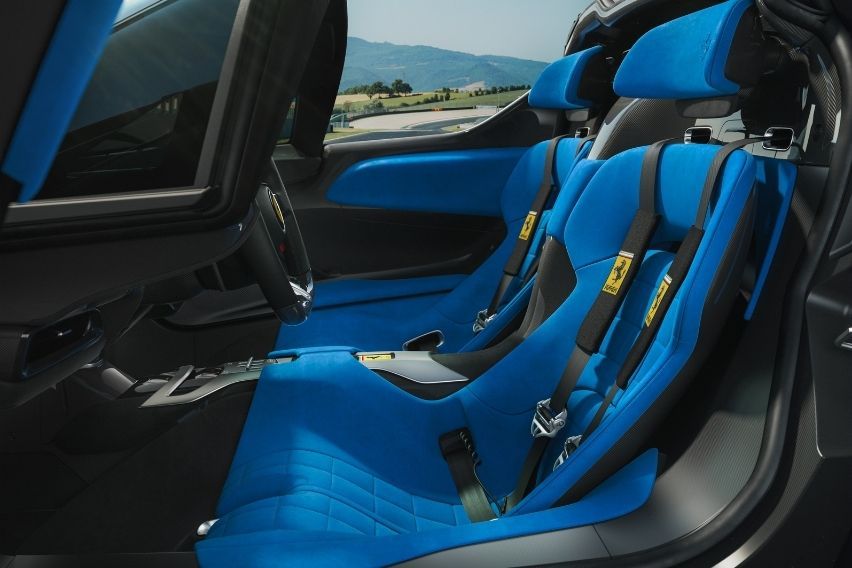
The structural elegance of earlier Ferrari sports prototypes such as the 512 S, 712 Can-Am, and 312 P is echoed in the Daytona SP3’s sleek double-crested front wings. The geometry of the flanks is effectively denoted by the shape of the wheelarches. They are structural in the front and establish a strong link between wheel and well by not totally following the tire’s round contour. The rear flank stretches from the sylph-like waist, forming a muscular rear muscle that wraps around the front of the wheels before tapering down to the tail, giving the three-quarter perspective a powerful dynamism.
The butterfly doors have an air box incorporated to them to route air to the side-mounted radiators. The sculptural forms give the doors a prominent shoulder containing the air intake that is optically linked to the vertical cut of the windscreen. The pronounced surface of the doors, whose leading edge forms the rear of the front wheelarch, also aids in airflow management from the front wheels. This surface treatment is also quite similar to that of the 512 S, which inspired the Daytona SP3’s aesthetic.
The wing mirrors have been placed ahead of the doors to the top of the wings, making reference to the 1960s sports prototypes. The position was intended to improve visibility while also lessening the impact of the wing mirrors on the air flow to the door intakes. To provide an uninterrupted flow to the intakes, the structure of the mirror’s cover and stem were refined using specialized CFD simulations.
The car’s three-quarter rear view is even more interesting because it fully exposes its original styling. The door is a carved volume that has a distinct dihedral form. It produces an entirely different, pinched-waist look when combined with the powerful muscle of the rear wing. The door visually transposes the volume of the flank and gives the car a more cab-forward appearance by extending the surface of the front wheel arch and counterbalancing the imposing rear. The placement of the side radiators allowed this architecture to be altered to fit a sports car.
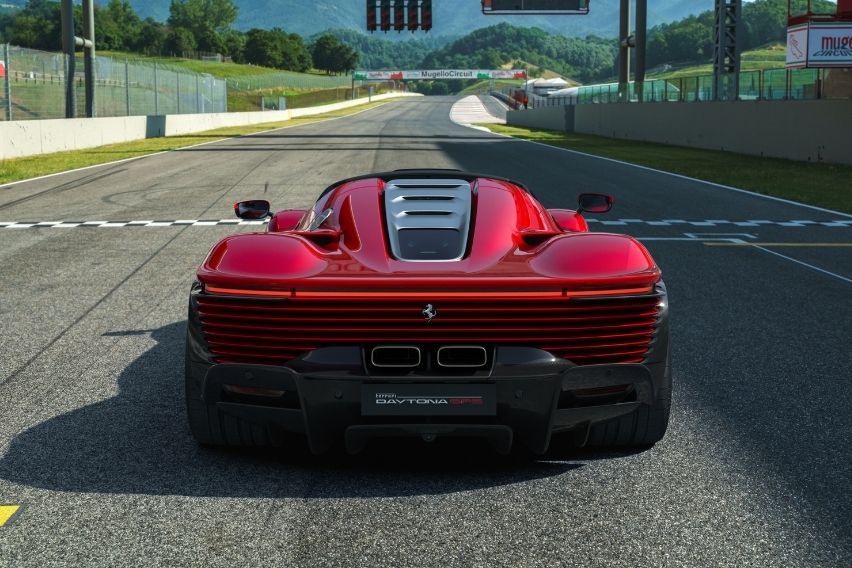
The Daytona SP3’s front is highlighted by two formidable wings with outer and inner crests, the latter of which plunge into two air vents on the bonnet, giving the wings a larger appearance. The interplay between the outer crest’s perceived mass and the inner crest’s aerodynamic purpose emphasizes how design and technology are intimately connected in this car. The large central grille is enclosed by two pillars, and a series of piled horizontal blades are surrounded by the bumper’s outer edge.
The headlight assemblies are distinguished by an upper movable panel that pays homage to the early supercars’ pop-up headlights, a Ferrari tradition that gives the car an aggressive, austere look. Two bumperettes arise from the outer border of the headlights, evoking the aeroflicks seen on the 330 P4 and other sports prototypes. They provide even more emotion to the front of the car.
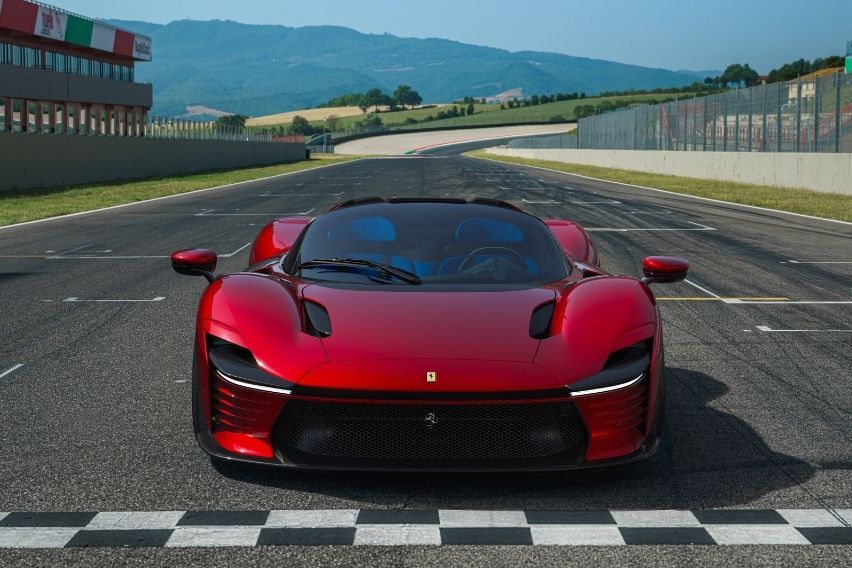
The rear bodywork emphasizes the wing’s imposing aspect by repeating the twin-crest theme and adding an aerodynamic vent to enhance its three-dimensional volume. A powerful tail with a central backbone feature inspired by the 330 P4 is created by combining the compact, tapering cockpit with the wings. At the end of this backbone, the naturally aspirated is exposed in all its glory.
The taillight assemblies are composed of a horizontal luminous bar underneath the spoiler and connected into the first line of a series of horizontal blades, creating an illusion of a light, radical, structured monolithic volume that gives the Daytona SP3 a look that is both futuristic and a nod to signatures from Ferrari’s DNA. The twin tailpipes are located in the upper portion of the diffuser, making the car’s appearance even more aggressive and concluding a design that visibly broadens it.
Even the cockpit is inspired by classic Ferraris like the 330 P3/4, 312 P, and 350 Can-Am. Starting with a high-performance chassis, the designers created a precisely refined interior that provides the comfort and luxury of a modern Grand Tourer while maintaining a minimalist style language. It upholds the philosophy behind some styling codes, such as the dash, which is both basic and utilitarian while also feeling completely contemporary. Modern seats incorporated into the body have replaced the traditional upholstered cushions that were directly attached to the chassis on sports prototypes, producing a smooth textural continuity with the surrounding trim.
The interior architecture benefitted from several exterior elements, including the windscreen. The cut of the windscreen header rail produces a vertical plane that splits the cockpit in two when viewed from the side, separating the functional part of the dashboard that houses the instrumentation from the seating. This architecture masterfully accomplishes the challenging task of being both incredibly sporty and extremely elegant at the same time.
The interior of the Daytona SP3 intends to provide a comfortable environment for both the driver and the passenger by incorporating styling cues found in race cars. The main goal was to visually widen the cabin by providing a clear separation between the dash and the two seats. In fact, the latter are part of a seamless textural continuity, with trim that extends all the way to the doors, replicating the sleek functionality found in sports prototypes. When the doors are open, the same extension on the trim can also be noticed on the sill area.
The same philosophy is applied on the dashboard – the Daytona SP3’s structure allows the trim to stretch all the way to the quarterlights, encompassing the entire space connecting to the windscreen. The slim dashboard appears to float within the upholstery. Its style motif is developed on two levels – the upper trimmed shell, which has a clean, sculptural look, is separated from the lower one with a clear textural and functional border. All of the touch controls on the Human-Machine Interface (HMI) are placed below this border.
The seats are built into the chassis, giving them the ergonomic wraparound design found in high-performance car, as well as the kind of exquisite workmanship that distinguishes them. Since the seats are fixed, the textural connection between them and the extension of the theme to surrounding trimmed areas, as well as certain volumetric effects, were feasible. The driver’s adjustments are managed through an adjustable pedal box. The distinct separation of the technical area of the cockpit and the occupant areas allowed the seat volume to be extended all the way to the floor.
The headrests were also derived from their competition counterparts, although unlike in the latter where they are merged into single-piece seats, they are independent in the Daytona SP3. Because of the fixed seat and adjustable pedal box architecture, they could be attached to the rear trim, making the cockpit appear lighter.
The layout of the door panels also contributes in making the cockpit look wider. The carbon-fiber panels have included trimmed areas – leather padding on the door panel at shoulder height reinforces the connection with sports prototypes and further emphasizes the wraparound effect. Lower down, the surfaces feel like an extension of the seat. The tunnel has a signature blade positioned underneath the connecting trim between the seats, with its functional parts at its edges. The gearshift gate, which returned to the range through the SF90 Stradale, is located in the front section. It is elevated and nearly suspended over the volumes around it.
To give the Daytona SP3 the most powerful V12 in the market, Ferrari took the engine from the 812 Competizione and moved it to the mid-rear position to improve the intake and exhaust layout as well as fluid-dynamic efficiency. As a result, the F140HC engine is Ferrari’s most powerful internal combustion engine ever, with the thrilling power and roar that a Prancing Horse V12 is known for.
The engine has a 65-degree vee between its cylinder banks. It retains the 6.5-liter capacity of its predecessor, which was used in the 812 Competizione and from which it acquired its modifications. All of the upgrades improve the performance of a powertrain that sets a new standard in its class, thanks to its incredible soundtrack achieved through targeted work on both the intake and exhaust lines and the seven-speed gearbox, which is now faster and more satisfying than ever.
Maximum revs of 9,500rpm and a torque curve that grows swiftly all the way up to maximum revs offer the feeling of limitless power and acceleration to the occupants. The use of titanium con rods, which are 40% lighter than steel, and a new material for the pistons was given special attention in order to reduce the engine’s weight and inertia. The new piston pins have been treated with Diamond Like Carbon (DLC), which lowers the coefficient friction and improves performance and fuel efficiency. The crankshaft has been recalibrated and has lost 3% of its weight.
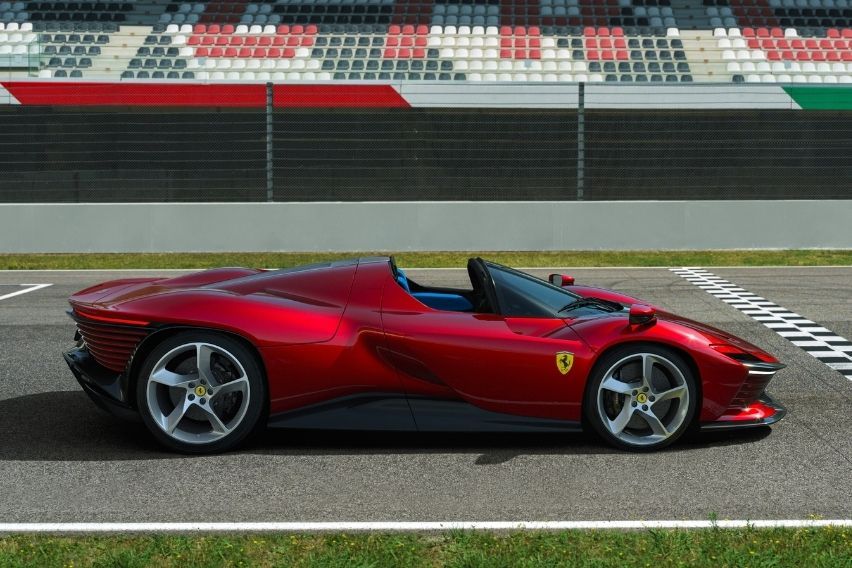
Sliding finger followers, which are taken from F1 and designed with the goal of lowering mass and allowing for more high-performance valve profiles, are used to open and close valves. The sliding finger followers have a DLC coating as well, and their purpose is to communicate the cam’s action to the valve using a hydraulic tappet as the pivot for its movement.
The intake system has been completely revamped — the manifold and plenum have been made smaller to minimize the overall length of the tracts and produce power at high revs, while a system of variable geometry inlet tracts optimizes the torque curve at all engine speeds. The technology allows for continual variation in the length of the intake tract assembly, adapting it to engine firing intervals to maximize the dynamic charge in the cylinders. The actuators are regulated by a separate hydraulic system that is regulated in a closed looped by the ECU, which adjusts the length position of the inlet tracts based on the engine’s load.
When combined with optimized cam profiles, the variable valve timing system offers an unprecedented system of equal height pressure peaks, which is essential to obtain power at high revs without sacrificing torque at low and medium revs. As a result, there will be a sense of constant, rapid acceleration, causing enormous power at maximum revs.
The management strategies for the gasoline direct injection system (GDI at 350 bar) have been refined. It now consists of two gasoline pumps, four rails with pressure sensors that feed back to the closed loop pressure control system, and electronic injectors. Calibration of the timing and amount of fuel injected at each injection, as well as an increase in injection pressure, has allowed for a 30% reduction in harmful emissions and particulate formulation compared to the 812 Superfast.
The ECU (ION 3.1), which incorporates an ion-sensing system that measures ionizing currents to adjust ignition timing, constantly monitors the ignition system. It also includes a single and multi-spark function for smooth, clean power delivery when repeated ignitions of the air-fuel mixture are required. Thanks to a clever technique that recognizes the octane rating of the fuel in the tank, the ECU also controls combustion in the chamber to guarantee that the engine is constantly operating at peak thermodynamic efficiency conditions.
A brand-new variable-displacement oil pump was created to allow for constant oil pressure regulation across the engine’s entire operating range. In terms of flow and pressure, the pump’s displacement is controlled by a solenoid valve controlled by the engine ECU in a closed loop, providing only the amount of oil needed to ensure the engine’s functionality and reliability at all times. Importantly, a less viscous engine oil is utilized than in the previous V12 to minimize friction and increase mechanical performance, and the entire oil scavenge line has been made more permeable to boost efficiency.
The ergonomics expertise earned by Maranello in Formula one is actively used in Daytona SP3’s engineering to guarantee that drivers feel completely united with their car. Because the seats are integrated into the chassis, the driving position is lower and more reclined than on other Ferraris in the lineup. The seating arrangement is actually similar to that of a single-seater. This helped cut down weight and retain the car’s height at 1142 mm, lowering drag. Each driver can find the most comfortable position with the help of the adjustable pedal box.
The steering wheel has the same HMI as the SF90 Stradale, Ferrari Roma, SF90 Spider, and 296 GTB, retaining Ferrari’s “hands on the wheel, eyes on the road” philosophy. Drivers may control 80% of the Daytona SP3’s features without moving their hands, and a 16-inch curved HD screen instantly conveys all driving-related information.
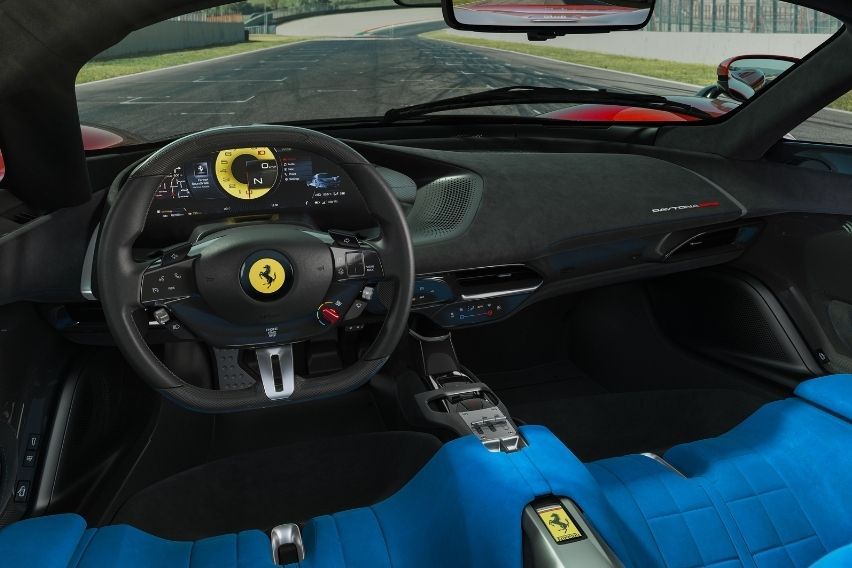
The chassis and bodyshell of the Daytona SP3 are made completely of composite materials, a technology borrowed directly from Formula 1 that provides great weight and structural rigidity/weight ratio.
Aeronautical composites were applied, including T800 carbon-fiber tubs that were hand-laid to ensure the proper amount of fiber in each place. T1000 carbon-fiber was used in the doors and sills, and its properties make it suitable for side collisions, making it important for cockpit protection. Kevlar was also utilized for regions that are most likely to be hit due to its impact resilience. The components are vacuum-bagged to eliminate any lamination errors, and the autoclave curing techniques are similar to those used in Formula 1, taking place in two phases at 130-degree Celsius and 150-degree Celsius.
Pirelli produced a specific tire for the Daytona SP3. The new P Zero Corsa was tailored for both dry and wet performance, with a focus on the car’s stability in low-grip situations. The new Icona is also fitted with the latest version of Ferrari’s SSC which features the Ferrari Dynamic Enhancer (FDE) to improve cornering performance. This lateral dynamics control system uses brake pressure at the calipers to manage the car’s yaw angle in on-the-limit driving. It may be switched to “Race” and “CT-Off” modes on the Manettino.
Weight distribution between the axles was further improved by using a mid-rear architecture and a composite chassis, which concentrated the masses around the center of gravity. These choices, together with the engine work, result in a record-breaking weight/power ratio as well as 0-100 kph and 0-200 kph acceleration figures.
To learn more about the Ferrari Daytona SP3, check out its technical specs below:
|
SPECIFICATIONS |
Ferrari Daytona SP3 |
|
Overall Length (mm) |
4,686 |
|
Overall Width (mm) |
2,050 |
|
Overall Height (mm) |
1,142 |
|
Wheelbase (mm) |
2,651 |
|
Track (mm) |
Front: 1,692 Rear: 1,631 |
|
Dry Weight (kg) |
1,485 |
|
Weight Distribution |
Front: 44% Rear: 56% |
|
Fuel Tank Capacity (L) |
86 |
|
Engine Type |
V12 |
|
Total Displacement (cc) |
6,496 |
|
Bore and Stroke (mm) |
94 x 78 |
|
Maximum Power Output (kW / rpm) |
618 / 9,250 |
|
Maximum Torque (Nm / rpm) |
697 / 7,250 |
|
Maximum Revs (rpm) |
9,500 |
|
Compression Ratio |
13.6:1 |
|
Tires and Wheels |
Front: 265/30 ZR 20 J9.0 Rear: 345/30 ZR 21 J12.5 |
|
Brakes (mm) |
Front: 398 x 223 x 36 Rear: 380 x 253 x 34 |
|
Transmission and Gearbox |
F1 dual-clutch gearbox, seven-speed |
|
Maximum Speed (kph) |
>340 |
|
0-100 kph Acceleration |
2.85 seconds |
|
0-200 kph Acceleration |
7.4 seconds |
|
Electronic Stability Control (ESC) |
With |
|
Anti-lock Braking System (ABS) |
With Electronic Brakeforce Distribution (EBD) |
|
Side Slip Control (SSC) |
With |
Photos from Ferrari
Also read: Ferrari unveils bespoke 2-seater V12
Sell your car at the best price
 Verified and genuine buyers
Verified and genuine buyers
Ferrari Car Models
Trending & Fresh Updates
- Latest
- Popular
You might also be interested in
- News
- Featured Stories
Ferrari Featured Cars
- Latest
- Popular
Latest Ferrari Car Videos on Zigwheels

Ferrari Car Articles From Carmudi
- journal

